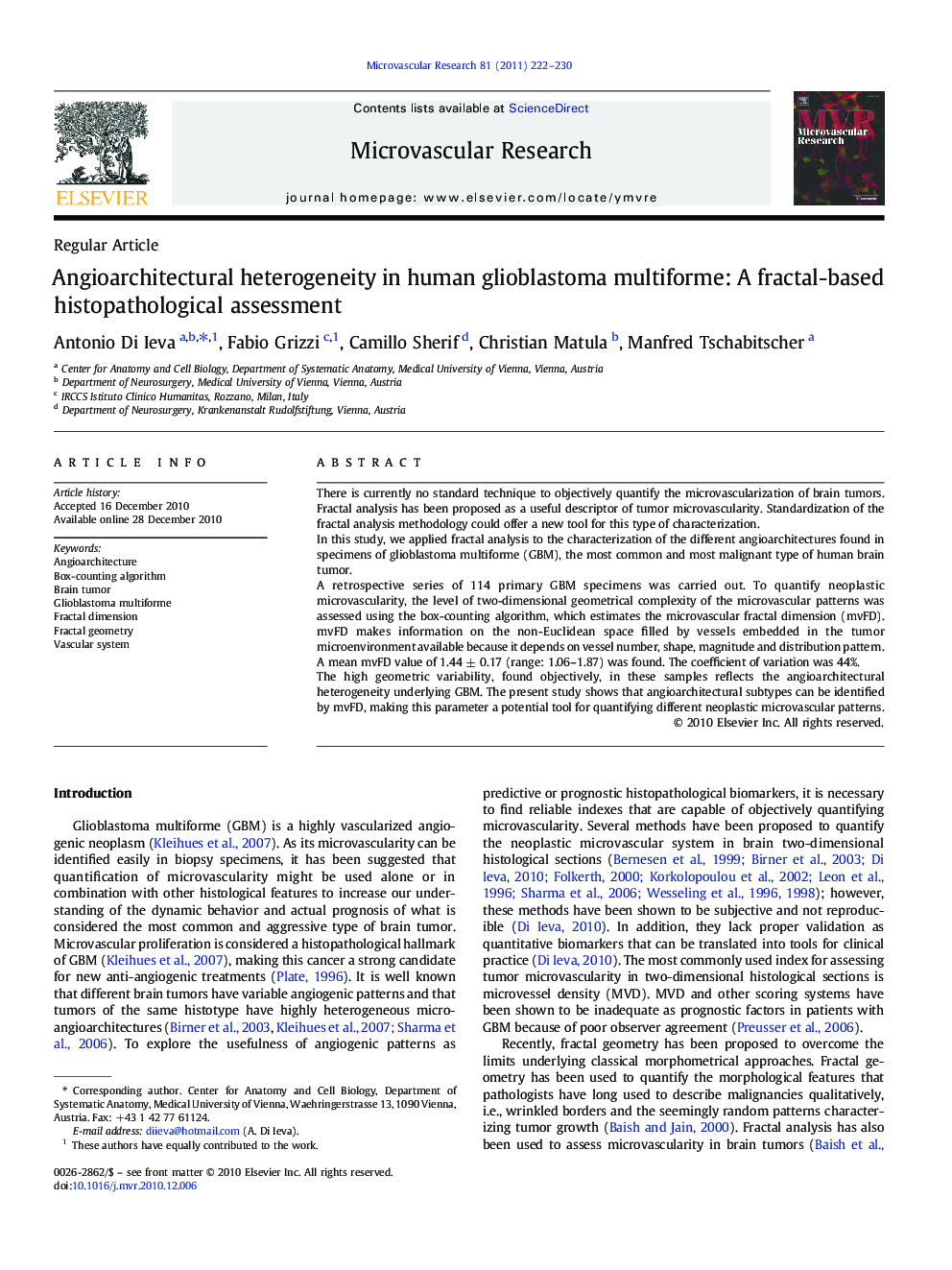| Article ID | Journal | Published Year | Pages | File Type |
|---|---|---|---|---|
| 1994992 | Microvascular Research | 2011 | 9 Pages |
There is currently no standard technique to objectively quantify the microvascularization of brain tumors. Fractal analysis has been proposed as a useful descriptor of tumor microvascularity. Standardization of the fractal analysis methodology could offer a new tool for this type of characterization.In this study, we applied fractal analysis to the characterization of the different angioarchitectures found in specimens of glioblastoma multiforme (GBM), the most common and most malignant type of human brain tumor.A retrospective series of 114 primary GBM specimens was carried out. To quantify neoplastic microvascularity, the level of two-dimensional geometrical complexity of the microvascular patterns was assessed using the box-counting algorithm, which estimates the microvascular fractal dimension (mvFD). mvFD makes information on the non-Euclidean space filled by vessels embedded in the tumor microenvironment available because it depends on vessel number, shape, magnitude and distribution pattern.A mean mvFD value of 1.44 ± 0.17 (range: 1.06–1.87) was found. The coefficient of variation was 44%.The high geometric variability, found objectively, in these samples reflects the angioarchitectural heterogeneity underlying GBM. The present study shows that angioarchitectural subtypes can be identified by mvFD, making this parameter a potential tool for quantifying different neoplastic microvascular patterns.
Graphical abstractDistinct cases of glioblastoma multiforme show different microvascular patterns characterized by different values of microvascular fractal dimension (mvFD, reported on the lower corner of the slide) and specific microvascular catalogs.Figure optionsDownload full-size imageDownload as PowerPoint slideResearch Highlights►In this study, we applied fractal analysis to the characterization of the different angioarchitectures found in specimens of glioblastoma multiforme (GBM). ►The neoplastic microvascularity was assessed by means of the box-counting algorithm, which estimates the microvascular fractal dimension (mvFD). ►A mean mvFD value of 1.44 ± 0.17 (range: 1.06–1.87) was found, with a very high coefficient of variation (44%). ►The high geometric variability of the samples reflects the angioarchitectural heterogeneity underlying the glioblastoma which appears to be “multiforme” also in the geometrical distribution of the microvessels.
